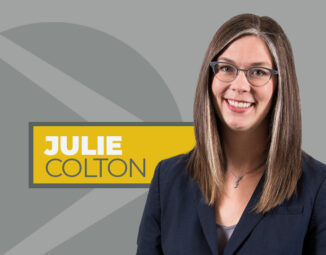The Long Road to Justice Before the Supreme Court
Being a family lawyer is not easy. You have to deal with emotional people going through turmoil in their lives. You have to juggle your time. And, with busy dockets, you have to wait your turn to get your chance to appear before the court. Predicting the result for your client and whether the litigation will be worth it is risky. In the end, more often than not and regardless of the result, you may wind up with a big account receivable that your client may not be able to pay. Nevertheless, it is a rewarding practice. Often you help improve the lives of parents and children. And, maybe once in a lifetime, you get the opportunity to appear before the Pennsylvania Supreme Court to right a wrong and change the application of the law forever.
A father came to me with a child support problem. He and his ex-wife had divorced many years prior. Their divorce case was over and their economic issues were resolved. Their divorce agreement required the father to pay child support for their two children under Pennsylvania support law, and they agreed to have shared physical custody of their two children on an equal 50/50 basis.
Over the years, the father made a nice living. He provided generously to his children by paying for all of their private schools and camps and a high amount of monthly child support to the mother, who had them half of the time. He did this under a Supreme Court rule that trial courts interpreted as treating high income earners differently than other earners by giving a percentage of a high earner’s income to the other parent of the child, even though the child did not need that amount of money. While the father may have paid more monthly support to the mother for the children than they actually needed over the years, this year was different. The father had an unusually good year. He had earned more than $15 million dollars. In applying the existing formula (without considering the children’s actual, reasonable needs), the amount of money he would have to pay to the mother for having the children half time would be exorbitant. It would be a transfer of wealth from the father to the mother, and the mother could do whatever she wanted with that large sum of money. Under the law, there is no requirement for the recipient of child support to account for how the money will be spent for the children, if at all. How could the law permit this?
Could I help him and, by doing so, help other high income earners similarly situated? Could the law be changed to require high income earners to be treated the same as other earners? Could they simply pay the reasonable needs of the children that the state statute requires? Could the Supreme Court rules be changed?
After considering the situation, I concluded that the Supreme Court rules did not have to be changed. Instead, the application of them had to be changed. A determination of the child’s reasonable needs by the trial courts throughout Pennsylvania had to be mandatory in formulating a child support order, whether you were rich or poor or in between.
We then embarked upon a five-year journey. Not surprisingly, because of the way trial courts had been applying the support guidelines, we lost before the trial court. Even though the mother’s reasonable needs for the children during her half of the year were found by the trial court to be approximately $2,000 per month ($24,000 per year), Pennsylvania’s percentage formula required the father to pay the mother approximately $60,000 per month (approximately $700,000 per year!). The trial judge, as was the custom in Pennsylvania, disregarded the reasonable needs of the children and awarded the mother approximately $60,000 per month in child support pursuant to the formula. We appealed to the Pennsylvania Superior Court and lost there, too. The Pennsylvania Superior Court declared the law to be that in Pennsylvania in a high income child support case, the child’s reasonable needs were not relevant and were not to be considered, and trial courts were to base child support on the percentage formula.
Our last hope was the Pennsylvania Supreme Court. The obstacle there was that the Pennsylvania Supreme Court only accepts approximately 2-3 percent of the cases appealed to it. Therefore, when I received the Supreme Court’s order granting allocatur, I felt we had a chance — a good chance.
The Supreme Court argument was scheduled for the Tuesday after Thanksgiving in the state Capitol building in Harrisburg. I arrived in Harrisburg the night before the argument. After having to change my hotel room two times, I tried to go to sleep and be ready for the argument the next day. During my sleep, I found myself going over parts of my argument that I hoped to convey to the justices. One thought came to mind (while sleeping) that I actually applied during the argument the next day. It was not the best sleep that I have had.
The next morning, after tying the knot of my deliberately selected tie as perfectly as possible and putting on my deceased grandfather’s cufflinks (I wanted to bring him into the Supreme Court with me.), I was off to meet my client to walk to the Capitol. Then, there it was, the state Capitol building, with that big green dome, looking beautiful.
After going through security and relinquishing my cellphone as mandated, I took my first step across the threshold of the Supreme Court courtroom. What a sight: a large glass dome in the ceiling, walls covered with murals, dark wood and electricity in the air. I took a deep breath and a large exhale as I stepped in. The elevated seats arranged in a horseshoe to my left were waiting for the seven justices. Unlike the Superior Court’s typical three-member panels, all seven justices hear Supreme Court arguments. I found my wife in the audience. I sat and waited my turn, trying to stay calm. As we sat in the gallery, I took in how beautiful and dignified the courtroom was. I remarked to my client, chuckling, “Think about the courtroom where we had the first trial.” It was rumored to be a converted storage room and was so small that we had to open the door a number of times during the trial to get air. What a difference.
We were No. 3 on the list. Interestingly, when your case is the next to be argued, you leave the gallery and sit at “on deck” tables. It was my turn to sit on deck. Being so focused on my upcoming argument, I did not hear those presenting the argument before mine. I only saw their mouths moving. I was ready.
The crier called my case and announced my name. What a moment. Many lawyers do not realize that there is no time limit to a Supreme Court argument and there are no rebuttals. I ended up arguing for approximately 40 minutes. The justices were professional and engaging. It felt almost like having a roundtable discussion with them. I could tell how well they were prepared and locked in on the issues at hand. It was clear they were interested, they were following me and they understood.
As I finished my argument and picked up my notes, I realized that I had never looked at them. They were sitting before me in a perfectly neat pile, still on Page 1. I sat down. As I listened to the questions the justices asked my adversary during his argument, it appeared to me that they believed that the wrong that I discussed during my argument needed to be corrected. It was an emotional feeling.
Then, argument was over. My client and my wife approached me from the gallery. I embraced them both, and we left.
A feeling that stays with me is being in my car leaving Harrisburg, being right in front of the Capitol building, looking up through the glass of my sunroof and seeing the green dome and realizing what I had just done. It was surreal.
Approximately seven months later, the decision arrived. My client prevailed. The Superior Court and trial court both were reversed. The Supreme Court vacated the child support order and unanimously decided that reasonable needs are to be considered in calculating child support in high income cases. Henceforth, trial courts are to conduct a reasonable needs analysis. It was hard to control my emotions, and I didn’t. The journey with my client had taken five years.
To practice law in any field is a privilege. It is hard work. It is preparation and more preparation. It requires a lot. But to travel that long road to the Pennsylvania Supreme Court is an experience I treasure and will never forget. When I am old and gray (and I’m already getting gray), I can always look back, smile and say to myself, “I was there.”
This article was originally published by The Pennsylvania Lawyer. Click here to view the article in its original format.






